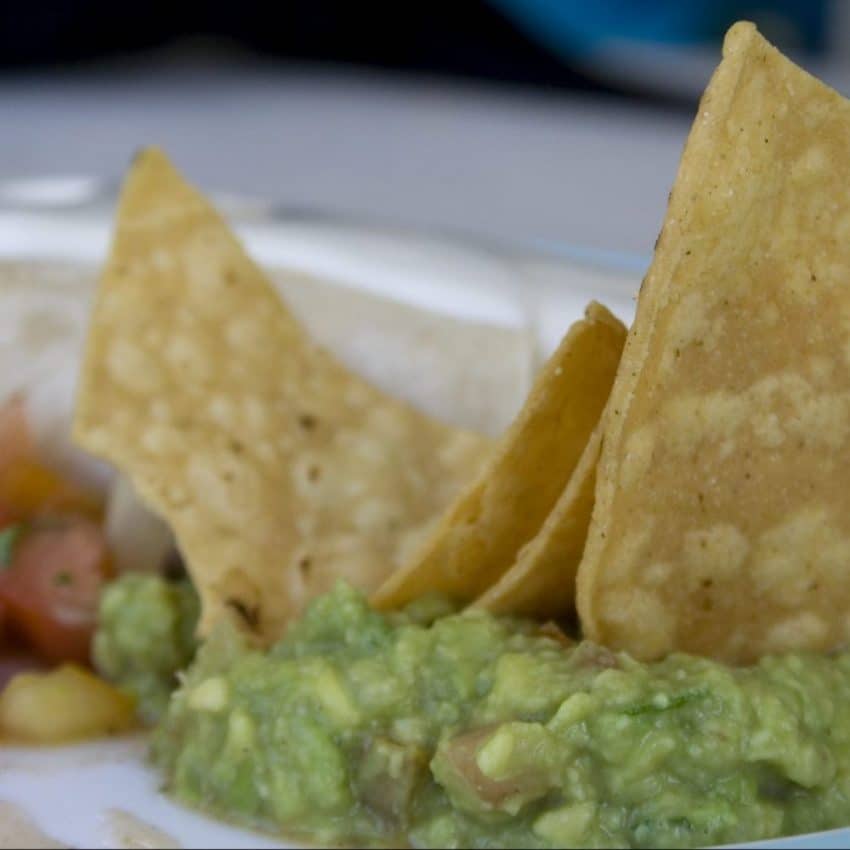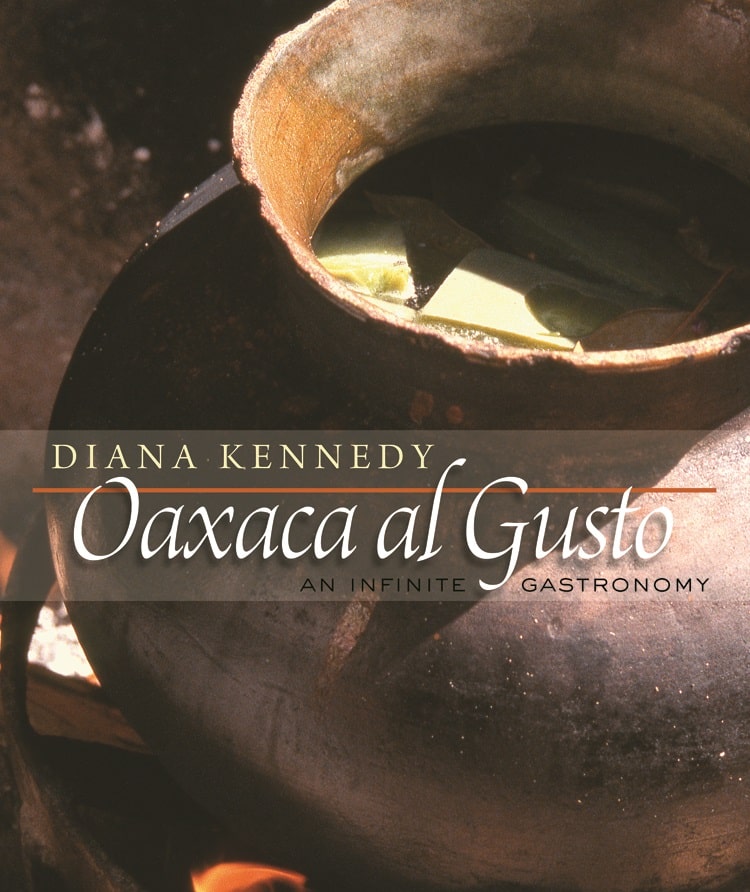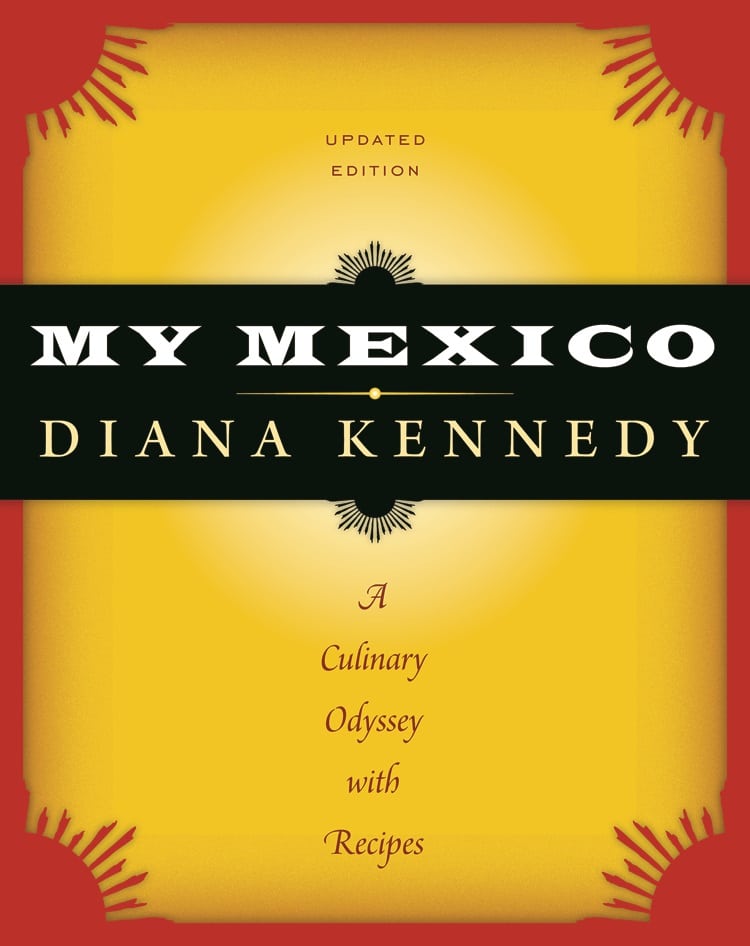Author: Diana Kennedy
(2010), University of Texas Press , 436 pages
Author: Diana Kennedy
(1998), University of Texas Press, 550 pages
It’s a sad fact that most Mexican food is a pale shadow of its true form. Mexico offers one of the most vibrant, colorful, nuanced, and complicated culinary palates in the world. To find authentic historic Mexican cooking anywhere is rare; almost all Mexican restaurants outside of Mexico traffic in beige, flavorless refried beans, neon yellow cheese, and characterless flour tortillas.
To be able to cook it at home yourself is almost impossible unless, like Diana Kennedy, you are willing to do whatever it takes in labor and love to replicate the classic signature dishes of Mexico.
An expat from the U.K., Kennedy has spent the past five decades living and traveling in Mexico and chronicling the intricacies of traditional Mexican cooking. The author of eight cookbooks and recipient of The Order of the Aztec Eagle, the highest possible decoration a foreigner can receive from the Mexican government, Kennedy is the single greatest, most reliable source of authentic, trustworthy Mexican recipes that one can find.
Of her books, two in particular stand out: My Mexico: A Culinary Odyssey with Recipes, and Oaxaca al Gusto. Both books, published by the University of Texas Press, serve not only as repositories of the recipes that Kennedy has spent a lifetime observing, recording, and cooking, but as chronicles of her time in Mexico.
My Mexico: A Culinary Odyssey is as much a travelogue as it is a cookbook. With over 300 recipes Kennedy does not skimp on providing a host of authentic, regional dishes, while simultaneously telling stories about the individual people from whom she has learned. My Mexico is split up not only by geographical region but, at times, by the very towns in which she has collected her unusual and vivacious dishes. In one section of her book she describes a visit to a friend’s cattle ranch to the west of the town of Comonfort, in the State of Guanajuato. Kennedy describes the fertile land of this area as well as the meal that was served, and provides recipes for two of the dishes eaten that night. One, an unusual guacamole made with fresh fruit, highlights how even the most commonplace of recipes can be transformed by what is locally available to the cook.
Oaxaca al Gusto shares characteristics of My Mexico, but in many ways is more of a straightforward cookbook. An impressively large and beautiful tome, it is a James Beard Foundation Book Award winner, and provides an immaculately-photographed glimpse into Oaxacan food culture. Also split up by geographical area, within this book Kennedy provides not just recipes, but a variety of notations regarding the characteristics of various ingredients, the time of day and circumstances in which different foods are consumed, and the type of vessels used to make different dishes.
It is by the authenticity of Kennedy’s dishes that many home cooks may find themselves intimidated, or simply stymied. Kennedy is known for lamenting the death of once ubiquitous vegetable varieties and cooking techniques (search for her opinions on nixtamalized tortillas and transgenic corn for an example), and this is reflected in her recipes. At times filled with ingredients that may be hard – if not downright impossible – to acquire, she also calls for traditional techniques and cookware. For example, her recipe for mole negro oaxaqueño (black Oaxacan mole, p. 50) calls not only for a specific type of clay pot (“it has to have a round base and a ‘collar’ around the top to hold in the heat”), but also for this pot to be “cooked on a charcoal brazier,” something that may be hard to find or properly utilize for the average home chef, even if access to a backyard or balcony is an option.
Kennedy’s obsession with authentic cuisine is the reason she is considered to be the gran dama of Mexican cooking. While we eat nachos (an almost disturbingly inauthentic, albeit tasty, American creation), Kennedy dines on mole de iguana negra (coastal mole with black iguana, p. 151). If ingredients can be located, and round-based, collared clay pots acquired, we too may be able to capture some of the lost secrets of Mexico. ![]()


